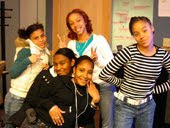
ACCESS is a distance learning program for high school students. This program was started in 2004. ACCESS provides so many courses such as, Math, Science, Social Studies, Foreign languages, and Health. The ACCESS vision is that "The state of Alabama will provide equal access to high quality instruction to improve student achievement through distance learning." I think this program is amazing.
It has the opportunity to help students advance in so many ways. It gives the students access to other areas of learning and is no cost to them. The students are able to advance in ways such as becoming independent learners, literate individuals, and become effective at written communication. It may not be the right choice for all students but I think it's a great way for students to learn. It gives them a choice of education in another form rather than in the traditional setting of the classroom. Click Here to visit the ACCESS website.









